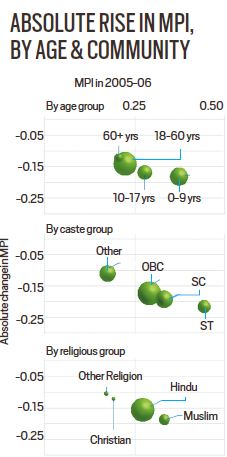7667766266
enquiry@shankarias.in
Why in news?
India has reduced its poverty rate from 55% to 28% in 10 years according to a new version of the global Multidimensional Poverty Index (MPI) report 2018.
What is the report on?

What is India's poverty scenario?

How is it globally?
Source: Indian Express